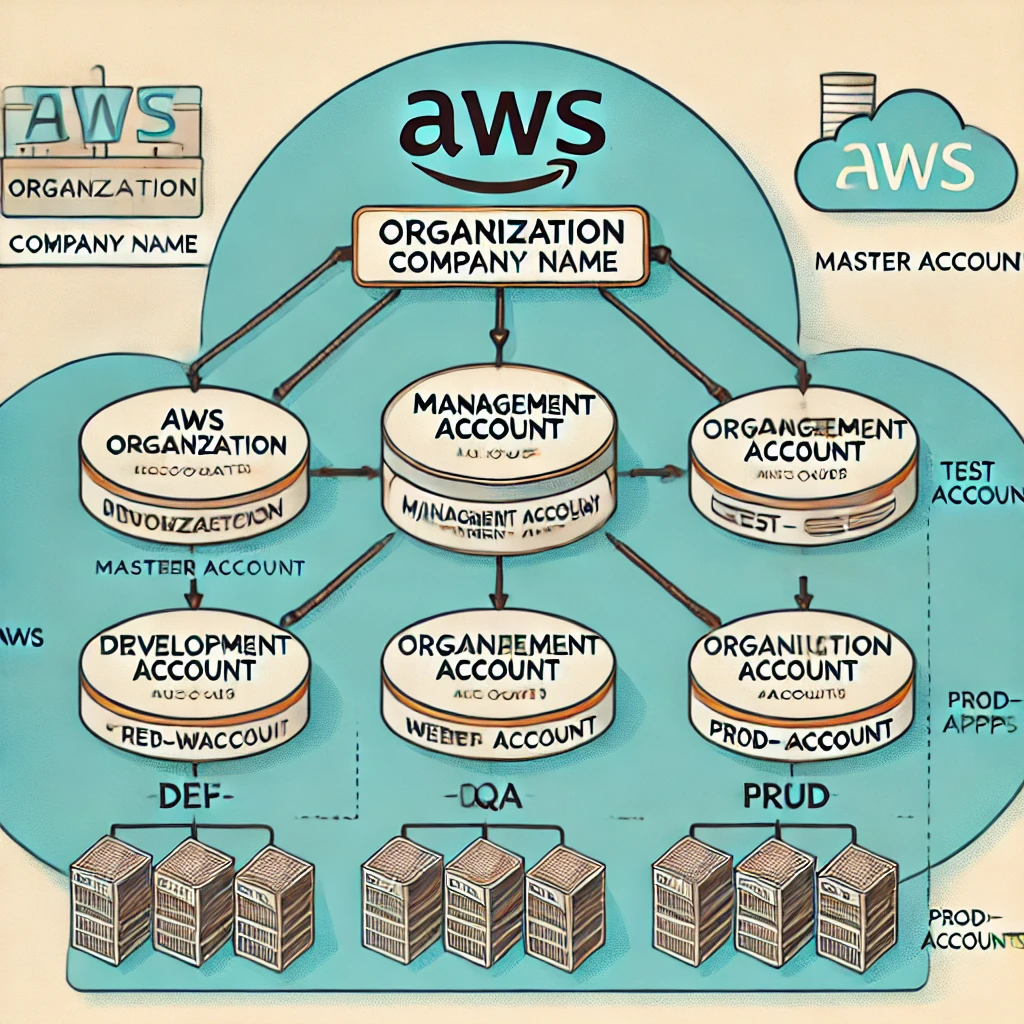AWS Account and Folder Structure Hierarchy for Beginners
 Shivam Dubey
Shivam Dubey
When you’re new to AWS, one of the first things you’ll encounter is how AWS organizes its accounts and resources. Understanding this structure is crucial for managing your cloud environment effectively and securely. Let’s break down the AWS account hierarchy and organizational structure step by step in simple language.
1. AWS Account Structure Overview
AWS organizes resources and users using a layered account structure, which includes:
Root Account
AWS Identity and Access Management (IAM) Users and Groups
AWS Organizations
Organizational Units (OUs)
This structure helps you manage permissions, security, and billing across multiple AWS services and accounts.
2. The Root Account
The root account is the first account created when you sign up for AWS. It has full access to all AWS services and resources in your environment.
The root user should only be used for initial setup and critical tasks because it has unrestricted permissions.
Best Practice: Secure the root account immediately by enabling Multi-Factor Authentication (MFA) and avoid using it for everyday tasks.
3. IAM Users, Groups, and Roles
To delegate access and manage permissions securely, AWS uses IAM (Identity and Access Management).
a. IAM Users
IAM Users are individual accounts created for people who need access to your AWS environment (e.g., developers, admins).
Each user has unique credentials (username and password) and can have different levels of access based on assigned permissions.
b. IAM Groups
Groups are collections of users with similar access needs. Instead of assigning permissions to each user individually, you can add users to a group and assign permissions to the entire group.
Example: You might create a group called "Developers" with permissions to access code repositories and a group called "Admins" with broader access.
c. IAM Roles
Roles are used for temporary access. They are not tied to specific users but can be assumed by any user, application, or AWS service when needed.
Example: An EC2 instance might assume a role that gives it access to read data from an S3 bucket.
4. AWS Organizations: Managing Multiple Accounts
AWS Organizations is a service that helps you manage multiple AWS accounts under a single organization. It’s designed to provide centralized control and simplify account management.
a. What is AWS Organizations?
AWS Organizations allows you to group multiple AWS accounts together and manage them from a single master (management) account.
It helps with centralized billing, policy management, and resource sharing across your entire organization.
b. Account Structure in AWS Organizations
Management Account (Master Account): This is the primary account in AWS Organizations. It has full control over all the accounts in the organization and handles billing.
Member Accounts: These are the individual AWS accounts that are part of your organization. Each member account can have its own resources and services, but the management account oversees them.
5. Organizational Units (OUs): Grouping Your Accounts
To make managing multiple accounts easier, AWS Organizations allows you to group accounts into Organizational Units (OUs).
a. What is an Organizational Unit (OU)?
An OU is like a folder that groups multiple AWS accounts together based on common needs or purposes.
You can create OUs for different environments (e.g., Development, Testing, Production) or for different departments (e.g., Finance, HR, IT).
b. Benefits of Using OUs
Simplified Management: Apply policies and permissions at the OU level instead of managing each account separately.
Policy Enforcement: Use Service Control Policies (SCPs) to control what services and actions can be used within the accounts in an OU.
Better Organization: Helps you keep your accounts organized and makes it easier to manage resources as your company grows.
6. Example AWS Account Hierarchy Structure
Here’s a simple example of what an AWS account hierarchy might look like:
yamlCopy codeAWS Organization (Company Name)
│
├── Management Account (Master Account)
│
├── Organizational Unit: Development
│ ├── Account: Dev-Frontend
│ └── Account: Dev-Backend
│
├── Organizational Unit: Testing
│ ├── Account: Test-QA
│ └── Account: Test-Automation
│
└── Organizational Unit: Production
├── Account: Prod-WebApp
└── Account: Prod-Database
In this structure:
The Management Account oversees the entire organization.
Accounts are grouped into OUs based on their purpose (Development, Testing, Production).
This setup allows you to manage permissions and policies at the OU level, reducing complexity.
7. Best Practices for AWS Account Hierarchy
Start Small, Then Expand: Begin with a few accounts and OUs, and grow your hierarchy as your needs evolve.
Implement Least Privilege: Grant only the permissions needed for each account or OU.
Use Descriptive Names: Name your accounts and OUs clearly to make it easier to understand their purpose.
Enable Logging and Monitoring: Use AWS CloudTrail and AWS Config to track activity and changes across all accounts.
8. Conclusion
Understanding the AWS account and folder hierarchy is the first step towards mastering cloud management in AWS. By structuring your accounts correctly using AWS Organizations and OUs, you can simplify management, improve security, and scale your cloud environment effectively.
As you gain experience, explore more features like Service Control Policies (SCPs) to enforce organization-wide rules and use tagging strategies to keep track of resources easily.
AWS hierarchy might seem complex at first, but with a solid understanding of the basics, you’ll be well-prepared to manage your AWS resources confidently.
Subscribe to my newsletter
Read articles from Shivam Dubey directly inside your inbox. Subscribe to the newsletter, and don't miss out.
Written by
